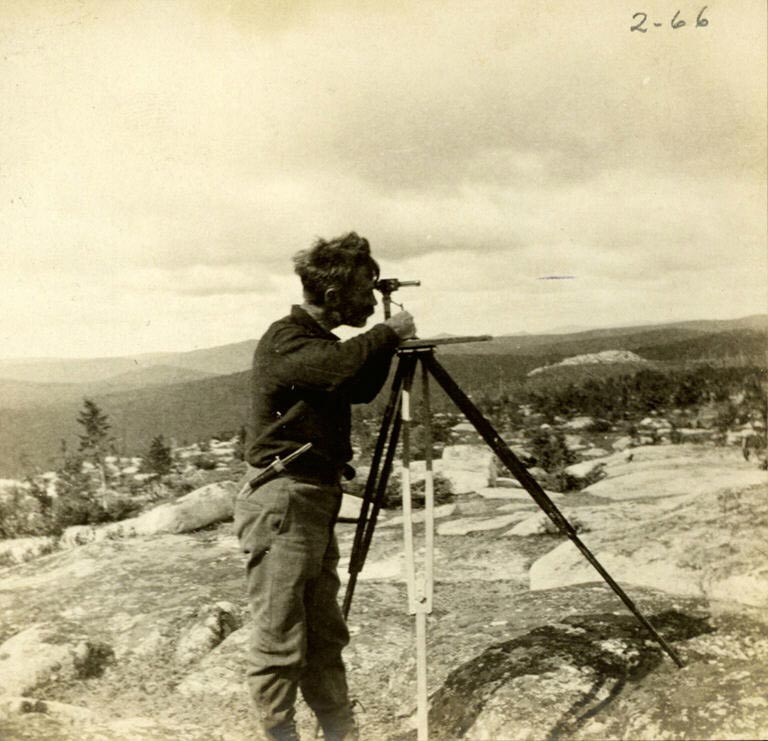|
Jonathan Hampton
Jonathan Hampton (1712 - 1 November 1777) was an American colonial surveyor, merchant, and militia officer involved with New Jersey's frontier fortifications and defenses along the Delaware River during the French and Indian War (1755-1763). In 1755, the Royal Governor Jonathan Belcher and the colonial legislature authorized the construction of stone blockhouse fortifications along the colony's Delaware River frontier to thwart violent incursions by disaffected Native Americans and their French allies as hostilities led to the French and Indian War. These incursions and other hostilities were a continuation of a European conflict between France and England called the Seven Years' War. The act authorizing these fortifications also appointed Jonathan Hampton as the victualler and paymaster of a military unit, the New Jersey Frontier Guard, to man these forts. To supply these troops, Hampton built the Military Road linking the provincial capital at Elizabethtown (now Elizabeth) w ... [...More Info...] [...Related Items...] OR: [Wikipedia] [Google] [Baidu] |
Surveying
Surveying or land surveying is the technique, profession, art, and science of determining the land, terrestrial Plane (mathematics), two-dimensional or Three-dimensional space#In Euclidean geometry, three-dimensional positions of Point (geometry), points and the Euclidean distance, distances and angles between them. These points are usually on the surface of the Earth, and they are often used to establish maps and boundaries for ownership, locations, such as the designated positions of structural components for construction or the surface location of subsurface features, or other purposes required by government or civil law, such as property sales. A professional in land surveying is called a land surveyor. Surveyors work with elements of geodesy, geometry, trigonometry, regression analysis, physics, engineering, metrology, programming languages, and the law. They use equipment, such as total stations, robotic total stations, theodolites, Satellite navigation, GNSS receivers, ... [...More Info...] [...Related Items...] OR: [Wikipedia] [Google] [Baidu] |
Delaware Water Gap
The Delaware Water Gap is a water gap on the border of the U.S. states of New Jersey and Pennsylvania where the Delaware River cuts through a large ridge of the Appalachian Mountains. The gap makes up the southern portion of the Delaware Water Gap National Recreation Area, which is used primarily for recreational purposes, such as canoeing, fishing, hiking, and rock climbing. Though the US National Park Service manages the National Recreation Area, portions of the water gap are also patrolled by New Jersey Division of Parks and Forestry. The park does not charge an entrance fee but does have expanded amenity fees, including vehicle season and daily passes, bicycles amenity fees, and charges for beach use. Most of the park is open 24-hours a day, with most day-use areas within the park open sunrise to sunset (such as trailhead parking lots, Millbrook Village, and all picnic areas). Geology A water gap is a geological feature where a river cuts through a mountain ridge. ... [...More Info...] [...Related Items...] OR: [Wikipedia] [Google] [Baidu] |
Surveyors From The Thirteen Colonies
Surveying or land surveying is the technique, profession, art, and science of determining the terrestrial two-dimensional or three-dimensional positions of points and the distances and angles between them. These points are usually on the surface of the Earth, and they are often used to establish maps and boundaries for ownership, locations, such as the designated positions of structural components for construction or the surface location of subsurface features, or other purposes required by government or civil law, such as property sales. A professional in land surveying is called a land surveyor. Surveyors work with elements of geodesy, geometry, trigonometry, regression analysis, physics, engineering, metrology, programming languages, and the law. They use equipment, such as total stations, robotic total stations, theodolites, GNSS receivers, retroreflectors, 3D scanners, lidar sensors, radios, inclinometer, handheld tablets, optical and digital levels, subsurface locat ... [...More Info...] [...Related Items...] OR: [Wikipedia] [Google] [Baidu] |
18th-century American Merchants
The 18th century lasted from 1 January 1701 (represented by the Roman numerals MDCCI) to 31 December 1800 (MDCCC). During the 18th century, elements of Enlightenment thinking culminated in the Atlantic Revolutions. Revolutions began to challenge the legitimacy of monarchical and aristocratic power structures. The Industrial Revolution began mid-century, leading to radical changes in human society and the environment. The European colonization of the Americas and other parts of the world intensified and associated mass migrations of people grew in size as part of the Age of Sail. During the century, slave trading expanded across the shores of the Atlantic Ocean, while declining in Russia and China. Western historians have occasionally defined the 18th century otherwise for the purposes of their work. For example, the "short" 18th century may be defined as 1715–1789, denoting the period of time between the death of Louis XIV of France and the start of the French Revolut ... [...More Info...] [...Related Items...] OR: [Wikipedia] [Google] [Baidu] |
Merchants From Colonial New Jersey
A merchant is a person who trades in goods produced by other people, especially one who trades with foreign countries. Merchants have been known for as long as humans have engaged in trade and commerce. Merchants and merchant networks operated in ancient Babylonia, Assyria, China, Egypt, Greece, India, Persia, Phoenicia and Rome. During the European medieval period, a rapid expansion in trade and commerce led to the rise of a wealthy and powerful merchant class. The European Age of Discovery opened up new trading routes and gave European consumers access to a much broader range of goods. By the 18th century, a new type of manufacturer-merchant had started to emerge and modern business practices were becoming evident. The status of the merchant has varied during different periods of history and among different societies. In modern times, the term ''merchant'' has occasionally been used to refer to a businessperson or someone undertaking activities (commercial or industrial) for t ... [...More Info...] [...Related Items...] OR: [Wikipedia] [Google] [Baidu] |



